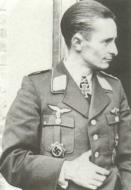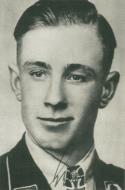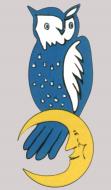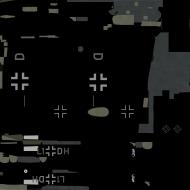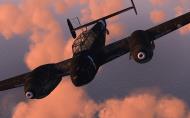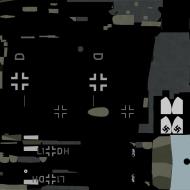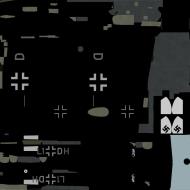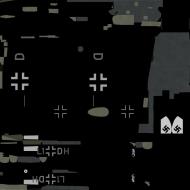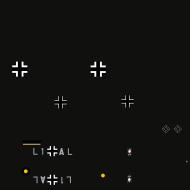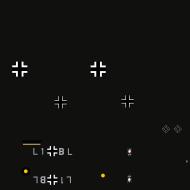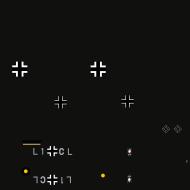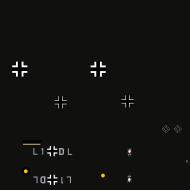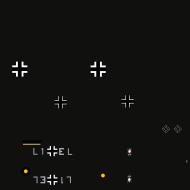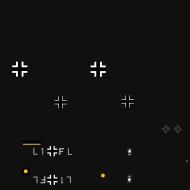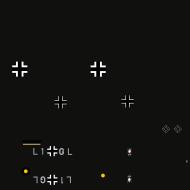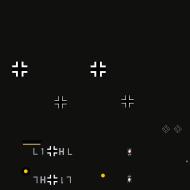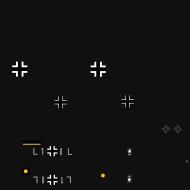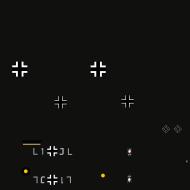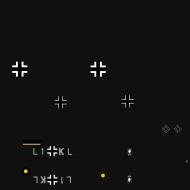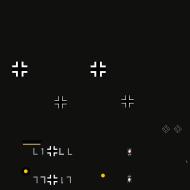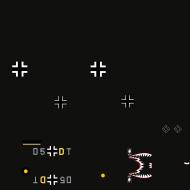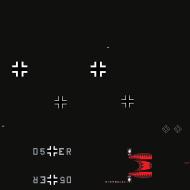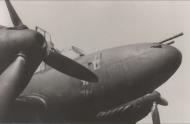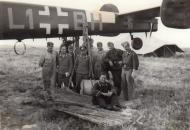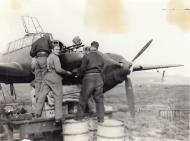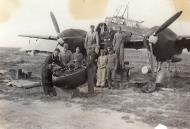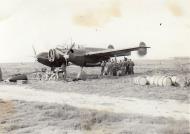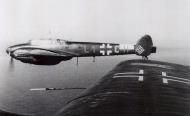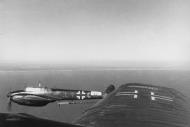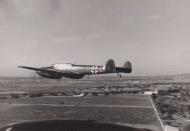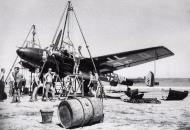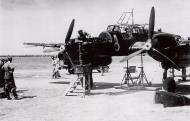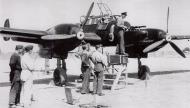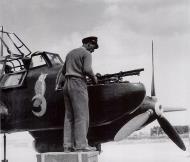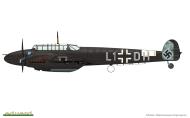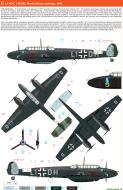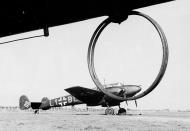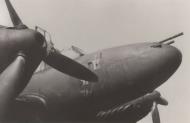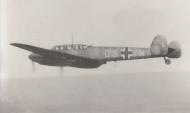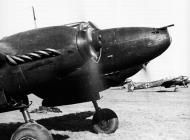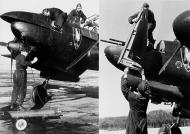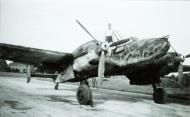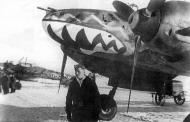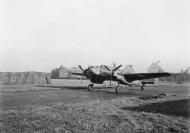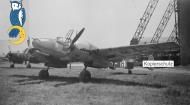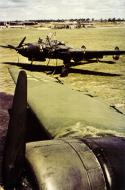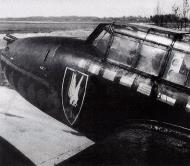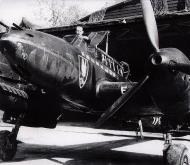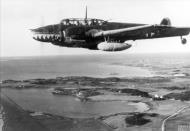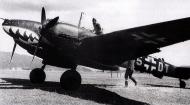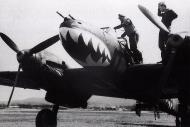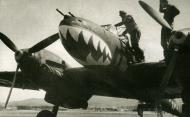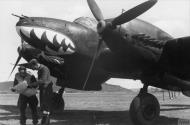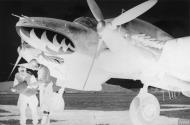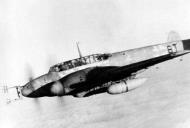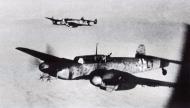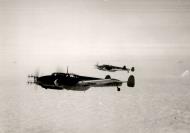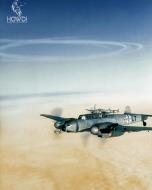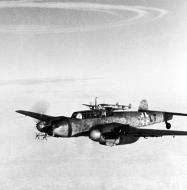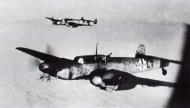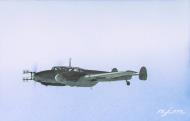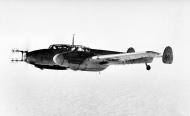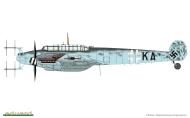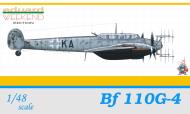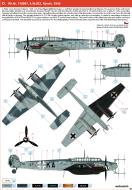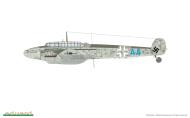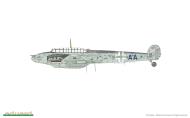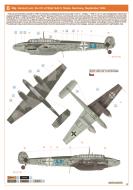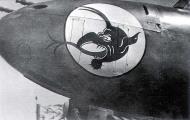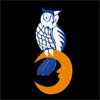 1 Staffel I. Gruppe Nachtjagdgeschwader 3- 1./NJG3 code: L1+
1 Staffel I. Gruppe Nachtjagdgeschwader 3- 1./NJG3 code: L1+
Geschwader Stab Nachtjagdgeschwader 3
Messerschmitt Bf 110G4 Zerstorer Geschwader Stab NJG3 (D5+AA) Helmut Lent Stade Germany Sep 1944
Eduard.com: Helmut Lent joined the Luftwaffe in 1936. He enlisted as a fighter pilot and served with II./JG 141. On May 1, 1939, II./JG 141 was redesignated I./ZG 76 and equipped with Bf 110 fighters. In battles over Poland, Norway and France, Lent downed seven enemy aircraft, and 101 victories were added to his credit while serving with NJG 1, NJG 2 and NJG 3. On August 1, 1943, when he was 25 years old, Maj. Lent was appointed CO of the entire NJG 3. He led the Geschwader until October 5, 1944 when his Ju 88G-6 crashed during landing after port engine failure. The entire crew succumbed to their injuries within two days. Lent was awarded the Knight�s Cross with Oak Leaves, Swords and Diamonds. Lent�s Bf 110G-4 wore a standard day fighter camouflage scheme of RLM 74/75/76. The starboard wing undersurfaces were painted black. Note the Geschwader CO marking on the fuselage, quite an unusual practice for night fighter units.
1 Staffel I. Gruppe Nachtjagdgeschwader 3
Messerschmitt Bf 110C Zerstörer 1./NJG3 (L1+CH) Sicily 1941-43 00
Messerschmitt Bf 110C Zerstorer 1./NJG3 (L1+CH) Sicily 01
Photo's 01-02: A particular feature of V.(Z)/LG1, the destroyer Gruppe of the instructional and demonstration unit Lehrgeschwader 1, was that throughout its existence it used Staffelletters corresponding to 1.Gruppe. Similarly, when V.(Z)/LG1 was redesignated in October 1940 to form 1./NJG3, the Gruppe continued to use its old 'L1' code at least until June 1941. These photographs of L1+CH of 1.Staffel were taken sometime between February and May 1941 when 1./NJG3 was based in Sicily The aircraft, a Bf 110C, is finished black overall but with the tips of the spinners and the individual aircraft letter 'C' painted in white, the Staffel color, which was repeated above and below each wingtip. The emblem on the nose only came into existence with the formation of 1./NJG3 and shows an owl perched on a quarter moon. It was normal for German aircraft operating in the Mediterranean area to have a white theatre band around the rear fuselage as a recognition marking, but on this machine it has been applied only to the upper part of the fuselage to avoid compromising its night finish when viewed from below. Note in these photo's the wheel well areas are black and in later photo's have been replaced on the port side and haven't been painted.
Messerschmitt Bf 110C Zerstorer 1./NJG3 (L1+DH) 00
Profile 00: Messerschmitt Bf 110C-4 'L1+DH' of 1./NJG3, North Africa, Summer 1941 This aircraft was finished black overall but with its replacement undercarriage door and tail components still in the day fighter finish of blue 65 with a light mottle of 71 on the tail. The propeller blades were green 70, as were the spinners, which had white tips. The fuselage code was grey 77, and the individual aircraft letter '0' was outlined in white. The badge of 1.jNGJ 3 appeared on both sides of the forward fuselage and only the upper half of a wide white band appeared on the rear fuselage.
Messerschmitt Bf 110C Zerstorer 1./NJG3 (L1+DH) Sicily 03-05
Photo's 03-05: This sequence of photographs showing L1+DH having its weapons harmonised illustrates that the Staffel badge was applied to both sides of the nose.
Messerschmitt Bf 110C Zerstorer 1./NJG3 (L1+DH) Benghazi 01
Photo 01: The practice of repeating the aircraft letter under the wing of some machines is seen more clearly in this photograph of L1+DH, another Bf 110C-4 of 1./NJG3.This photograph, however, is thought to have been taken a little later than the one of L1+CH, probably after the Staffel had moved from Sicily to Benghazi where it operated under Fliegerführer Afrika from May to August 1941 and from Derna until October. As the aircraft shown here still carries the unit code 'L1', which was not changed to 'D5' until June 1941, this photograph was almost certainly taken at Benghazi. In this scene, the aircraft is being repaired and although already fitted with replacement undercarriage doors and tail components, these have yet to be camouflaged in black.
Messerschmitt Bf 110C Zerstorer 1./NJG3 (L1+DH) Sicily 1941
Profile 00: Messerschmitt Bf 110C-4 'L1+DH' of 1./NJG3, North Africa, Summer 1941 This aircraft was finished black overall but with its replacement undercarriage door and tail components still in the day fighter finish of blue 65 with a light mottle of 71 on the tail. The propeller blades were green 70, as were the spinners, which had white tips. The fuselage code was grey 77, and the individual aircraft letter '0' was outlined in white. The badge of 1./NGJ 3 appeared on both sides of the forward fuselage and only the upper half of a wide white band appeared on the rear fuselage.
Messerschmitt Bf 110C Zerstorer 1./NJG3 (L1+CH) Sicily 01
Photo's 01-02: A particular feature of V.(Z)/LG1, the destroyer Gruppe of the instructional and demonstration unit Lehrgeschwader 1, was that throughout its existence it used Staffelletters corresponding to 1.Gruppe. Similarly, when V.(Z)/LG1 was redesignated in October 1940 to form 1./NJG3, the Gruppe continued to use its old 'L1' code at least until June 1941. These photographs of L1+CH of 1.Staffel were taken sometime between February and May 1941 when 1./NJG3 was based in Sicily The aircraft, a Bf 110C, is finished black overall but with the tips of the spinners and the individual aircraft letter 'C' painted in white, the Staffel color, which was repeated above and below each wingtip. The emblem on the nose only came into existence with the formation of 1./NJG3 and shows an owl perched on a quarter moon. It was normal for German aircraft operating in the Mediterranean area to have a white theatre band around the rear fuselage as a recognition marking, but on this machine it has been applied only to the upper part of the fuselage to avoid compromising its night finish when viewed from below. Note in these photo's the wheel well areas are black and in later photo's have been replaced on the port side and haven't been painted.
Messerschmitt Bf 110C Zerstorer 1./NJG3 (L1+DH) Sicily 03-05
Photo's 03-05: This sequence of photographs showing L1+DH having its weapons harmonised illustrates that the Staffel badge was applied to both sides of the nose.
Messerschmitt Bf 110C Zerstorer 1./NJG3 (L1+DH) Benghazi 01
Photo 01: The practice of repeating the aircraft letter under the wing of some machines is seen more clearly in this photograph of L1+DH, another Bf 110C-4 of 1./NJG3.This photograph, however, is thought to have been taken a little later than the one of L1+CH, probably after the Staffel had moved from Sicily to Benghazi where it operated under Fliegerführer Afrika from May to August 1941 and from Derna until October. As the aircraft shown here still carries the unit code 'L1', which was not changed to 'D5' until June 1941, this photograph was almost certainly taken at Benghazi. In this scene, the aircraft is being repaired and although already fitted with replacement undercarriage doors and tail components, these have yet to be camouflaged in black.
3 Staffel I. Gruppe Nachtjagdgeschwader 3
Messerschmitt Bf 110E Zerstörer 3./NJG3 (L1+BL) 01
Photo 01: The overall black night fighter scheme, as seen on this Bf 110 of 3./NJG3, was the least effective for night operations.
Messerschmitt Bf 110 C-4 3./NJG3 (L1+IL) Alfred Wasselmann Vechta Lower Saxony Germany 1940
Messerschmitt Bf 110G Zerstörer 3./NJG3 (D5+RL) Denmark 1945
This nightfighting Bf 110 is illustrated as it appeared in MTO operations between February and October, 1941. The original camouflage scheme was oversprayed with black on all surfaces. Both sides of the nose carried the 1./NJG3 emblem. The fuselage, ahead of the tail unit, carried the identifier of Axis aircraft for this theatre of operations, a white band, which was often carried only around the top surface of the fuselage on aircraft of NJG3. An interesting feature of this plane were components carrying the standard day camouflage, likely the result of cannibalization of other machines. The day scheme was evident on the elevators, the left vertical tail, and apparently the left door of the left landing gear as well. This aircraft flew later than the others represented in this kit, and as such, and as opposed to, also carried the armoured windscreen.
Additional Information Eduard plastic models - http://www.eduard.com/
II. Gruppe Nachtjagdgeschwader 3 - II./NJG3
Messerschmitt Bf 110E Zerstörer II./NJG3 Schleswig
Photo 01: An interesting photograph, probably taken in 1942, of a Bf 110E-2 of II./NJG3 at Schleswig, the main base of this Gruppe from September 1941 to March 1944. Just visible on the fuselage is the Geschwader code D5 in light grey and what appears to be a single victory bar on the starboard tail unit. Note also the Roman numeral indicating II. Gruppe positioned near the Englandblitz emblem on the forward fuselage and that only the undersurfaces and the sides of the fuselage and engine nacelles have been camouflaged in black, the uppersurfaces remaining in the day fighter colors of 74 and 75. The aircraft from which the Bf 110 was photographed is a Ju-88.
4 Staffel II. Gruppe Nachtjagdgeschwader 3- 4./NJG3 code: L1+
Messerschmitt Bf 110C Zerstörer 4./NJG3 (3C+DM) Operation Donnerkeil 1942 01
Messerschmitt Bf 110G-4 Zerstörer 4./NJG3 (B4+KA) Kurt Keilig WNr 110087 Kjevik Norway 1945
Photo 01: Meanwhile, in late November 1944, Nachtjagdstaffel Finland was redesignated and became once again Nachtjagdstaffel Norwegen, retaining the unit code 'B4' originally allocated to NJ-Staffel Finland, together with the earlier formation's Staffelletter 'A'. Finally, in March 1945 and while still based at Kjevik, the Staffel was again redesignated and became 4./NJG3. With the end of the war on 8 May 1945, this Staffel was ordered to fly to Kurland to evacuate Army personnel, but this Bf 110G-4, WNr. 110087, now of 4./NJG3, remained behind in Norway where the photograph was taken. This aircraft had its operational code B4+KA in black, and the undersurface of the starboard wing was also in black. The uppersurface camouflage on the leading edge of the wing would indicate that this and the tailplane were overall grey 75, although the uppersurfaces of the fuselage are finished in a reverse mottle of 76 over 75. Note, however, that the mottles on the fin and rudder have a different appearance and are much darker, suggesting the [mish here was 81 or 83 applied over 76 with little thinning.
Artwork Wr.Nr. 110087, 4./NJG3, Kjevik, 1945. 4./NJG 3 was formed in March, 1945, out of Nachtjagdstaffel Norwegen, a unit that operated independently from Norway. The purpose of the unit was to intercept allied aircraft over Scandinavia. Besides the Bf110G, the unit also flew the Ju 88G and He 219. Its last function was on May 8, 1945, evacuating German unit officers from the surrounding areas. Aircraft B4+KA probably did not take part in this final action, because the end of the war found the aircraft still at Kjevik, in Norway. The aircraft carried FuG 220 SN-2b with vertical dipoles, and with an older type of mounting. It carried a camouflage scheme of irregular fields of RLM 74 and RLM 75 on upper surfaces, and RLM 76 on the lower surfaces. The lower surface of the starboard wing and engine cowl were oversprayed in black. This aircraft is recorded as crewed by Fw. Kurt Keilig (pilot, Fw Kurt Schroter (radio operator) and Uffz. Karl Stamminger (mechanic).
Additional Information Eduard plastic models - http://www.eduard.com/
III. Gruppe Nachtjagdgeschwader 3 - III./NJG3
Messerschmitt Bf 110E Zerstorer 7.NJG3 (D5+IR) with Haifischmaul over Norway IWM HU 108215
Photo 01: Messerschmitt Bf 110E of III/NJG 3, wearing the 'Haifischmaul' (shark's mouth) marking of II/ZG 76, from which III/NJG 3 was formed in the autumn of 1941.
Source: Imperial War Museum IWM HU 108215 https://www.iwm.org.uk/collections/item/object/205266367
Messerschmitt Bf 110G Zerstörer III./NJG3 01
Photo 01: A spectacular view of an early Bf 110G of III./NJG3 raising clouds of dust as its engines are started. The use of 'Window', first used by the RAF during an attack on Hamburg on the night of 24/25 July 1943, rendered existing ground and airborne radar useless and it was not until October 1943 that this was overcome with the introduction of the new FuG 220 'Lichtenstein' SN-2 radar which operated on a different fiequency. In the meantime, 'Zahme Sau' tactics dominated, with the conventional twin-engined fighters using FuG 227 'Flensberg' to home in on the RAF's 'Monica' tail-warning radar or various jamming transmitters. This aircraft is finished in a 74/75/76 scheme and has retained the traditional shark's mouth design of II./ZG76,from which III./NJG3 was formed in 1941. The aerials on the nose are for the FuG 220 SN-2 radar, and the pitot tube, normally on the starboard wingtip, has been relocated inboard to avoid interfering with the aerial for the FuG 227 'Flensburg' radar homing device.
7 Staffel III. Gruppe Nachtjagdgeschwader 3
Messerschmitt Bf 110G-4 7./NJG3 (D5+BR) Germany 1944-45.
Messerschmitt Bf 110C Zerstörer 7./NJG3 (D5+ER) Lüneburg 1942 00
Profile 00: Messerschmitt Bf 110C 'D5+ER' of 7./NJG3, 1942. On this overall black aircraft, the red areas of the shark's mouth and its outline remained in red but, curiously, the teeth had been overpainted with matt black, although no such attention had been given to the national insignia which retained their bright white areas. The row of flags beneath the cockpit are those of the countries against which the pilot fought or in which he was stationed and represent, from the front, Belgium, France, UK, Holland, Greece, Iraq, Yugoslavia, Norway and Denmark. Note, however, that the flag of the United Kingdom is inaccurate in detail and also that the red and the blue have been reversed.
Messerschmitt Bf 110C Zerstörer 7./NJG3 (D5+ER) Lüneburg 1942 01-02
Photo's 01-02: Another shark's mouth aircraft was this Bf 110C coded D5+ER of 7./NJG 3 which was detached from the rest of III. Gruppe at Stade and throughout 1942 was based at Lüneburg. This Staffel was formed in November 1941 by redesignating 4./ZG76 which, for a short while in May 1941, had operated in lraq. The association with II./ZG76 and Iraq has been maintained on this machine which has retained the shark's mouth decoration which originated with II./ZG76 and includes the flag of Iraq in the row of flags painted beneath the canopy. Other points of interest on this machine include the white individual aircraft letter 'E' in the Staffel colour on the leading edge of both wings inboard of the engine nacelles, and the white teeth of the shark's mouth which have been overpainted with black night camouflage.
Pilots NJG1 pilot Wilhelm Herget 01
Photo 01: By the time of his transfer to the Nachtjagd in 1941, Wilhelm Herget had already shot down 14 enemy aircraft by day, nine of which were destroyed over England in 1940. He was one of a number of established Zerstörer pilots who made a successful transition to night fighting and finished the war with 58 night victories and 15 day victories. Maj. Wilhem Herget shot down 15 aircraft while flying Bf 110's and shot down a total of 72 EA. He served with the ZG76, NJG1, NJG3, NJG4, JV44.
Pilots NJG1 pilot Wilhelm Herget June 1943 01
Photo 01: The Knight's Cross is awarded to Hauptmann Wilhelm Herget (second from right) and Hauptmann Hans-Dieter Frank (second from left) at Venlo on 20 June 1943. On the far left is Major Werner Streib and on the far right is Major Helmut Lent. In the centre is General der Flieger Josef Kammhuber.
8 Staffel III. Gruppe Nachtjagdgeschwader 3
Messerschmitt Bf 110 G-4 8./NJG3 (D5+CS) Germany Spring 1944.
Messerschmitt Bf 110G Zerstörer 8./NJG3 (D5+DS) 1944-45
Messerschmitt Bf 110C Zerstörer 8./NJG3 (D5+KS) 19429 Staffel III. Gruppe Nachtjagdgeschwader 3
Messerschmitt Bf 110G Zerstörer 9./NJG3 (D5+DT) 1943
Profile 00: Messerschmitt Bf 110 G-4 'D5+DT' of 9./NJG3, Stade, early 1943 This aircraft was finished in the standard 1943 day fighter scheme of grey 76 on the undersurfaces with 74 and 75 on the uppersurfaces, these two colors breaking up into mottles on the fuselage sides. The fuselage Balkenkreuz was the white outline type and the fuselage code was in black. Note that this aircraft retained the bomb racks under the wings and fuselage and has the same tail fins as on earlier Bf 110 variants.
Messerschmitt Bf 110C Zerstörer 9./NJG3 (D5+DT) 1941 01-02
Photo 01-02: Wearing a kapok-filled aircrew lifejacket, the pilot of Bf 110C D5+DT of 9./NJG 3 climbs aboard his aircraft at the start of yet another mission in the early autumn of 1941. This machine still bears the distinctive 'sharksmouth' marking of II./ZG 76, which supplied early Nachtjagd units with many of their Bf 110s.
Photo 03: Messerschmitt Bf 110C 'D5+DT' of 9./NJG 3 wearing the 'Haifischmaul' (shark's mouth) marking of II/ZG 76, from which III/NJG 3 was formed in the autumn of 1941. IWM HU 108210
Source: Imperial War Museum IWM HU 108210 https://www.iwm.org.uk/collections/item/object/205234611
Messerschmitt Bf 110G-4 9./NJG3 (D5+HT) Germany Spring 1945.
Messerschmitt Bf 110G Zerstörer 9./NJG 3 (D5+LT) 1943 00
Profile 00: Messerschmitt Bf 110G-4 'D5+LT' of 9./NJG3, Stade, early 1943 This aircraft was finished in the standard 1943 day fighter scheme of grey 76 on the undersurfaces with 74 and 75 on the uppersurfaces, these two colors breaking up into mottles on the fuselage sides. The fuselage Balkenkreuz was the white outline type and the fuselage code was in black. Note that this aircraft retained the bomb racks under the wings and fuselage and has the same tail fins as on earlier Bf 110 variants.
Messerschmitt Bf 110G Zerstörer 9./NJG3 (D5+LT) 1943 01
Photo 01: The first examples of the Bf 110G-4 were delivered to III./NJG3 at Stade in early 1943 and this photograph showing two aircraft of 9./NJG3 in daylight over northern Germany was probably taken soon afterwards, by which time the earlier all-black night fighter finish began to give way to the standard 74/75/76 day fighter scheme. These machines are coded D5+DT and D5+LT and, for security reasons, have the first two characters of the code about one fifth of the size of the remaining letters. Both aircraft are fitted with FuG 212 airborne radar, but note that the machine nearest the camera also has bomb racks under the wings and the fuselage centre section.
Luftwaffe pilot Walter Nowotny 258 kills
Luftwaffe pilot Theodor Weissenberger 208 kills
Luftwaffe pilot Heinz Bar 175 kills
Luftwaffe pilot Franz Schall 133 kills
Luftwaffe pilot Rudolf Rademacher 126 kills
Luftwaffe pilot Adolf Galland 104 kills
Luftwaffe pilot Hermann Buchner 58 kills
Luftwaffe pilot Erich Hohagen 50 kills
Luftwaffe pilot Rudolf Sinner 39 kills
Luftwaffe pilot Ernst-Wilhelm Modrow 32 kills
Luftwaffe pilot Richard Altner 25 kills
Luftwaffe pilot Gunther Wegmann 21 kills
Luftwaffe pilot Wolfgang Schenck 18 kills
Luftwaffe pilot Franz Holzinger 10 kills
Luftwaffe pilot Helmut Lennartz 10 kills
Luftwaffe pilot Alfred 'Bubi' Schreiber 9 kills
Luftwaffe pilot Eduard Schallmoser 3 kills
Luftwaffe pilot Wilhelm Batel 1 kills
Luftwaffe pilot Joachim Fingerlos 1 kills
Bibliography: +
- Campbell, Jerry L. Messerschmitt BF 110 Zerstörer in Action. Carrollton, Texas: Squadron/Signal Publications, Inc., 1977. ISBN 0-89747-029-X.
- Caldwell, Donald and Richard Muller. The Luftwaffe over Germany: Defence of the Reich. London: Greenhill Books, 2007. ISBN 978-1-85367-712-0.
- Ciampaglia, Giuseppe. 'Destroyers in Second World War'. Rome: IBN editore, 1996. ISBN 88-86815-47-6.
- Deighton, Len. Fighter: The True Story of the Battle of Britain. London: Pimlico, 1996. ISBN 0-7126-7423-3.
- de Zeng, H. L., D. G. Stanket and E. J. Creek. Bomber Units of the Luftwaffe 1933-1945: A Reference Source, Volume 2. London: Ian Allan Publishing, 2007. ISBN 978-1-903223-87-1.
- Donald, David, ed. Warplanes of the Luftwaffe. London: Aerospace, 1994. ISBN 1-874023-56-5.
- Geust, Carl-Fredrik and Gennadiy Petrov. Red Stars Vol 2: German Aircraft in the Soviet Union. Tampere, Finland: Apali Oy, 1998. ISBN 952-5026-06-X.
- Hirsch, R.S. and Uwe Feist. Messerschmitt Bf 110 (Aero Series 16). Fallbrook, California: Aero Publishers, Inc., 1967.
- Hooton, E.R.Luftwaffe at War; Blitzkrieg in the West: Volume 2. London: Chervron/Ian Allan, 2007. ISBN 978-1-85780-272-6.
- Hooton, E.R. Luftwaffe at War; Gathering Storm 1933-39: Volume 1. London: Chervron/Ian Allan, 2007. ISBN 978-1-903223-71-0.
- Ledwoch, Janusz. Messerschmitt Bf 110 (Aircraft Monograph 3). Gdańsk, Poland: AJ-Press, 1994. ISBN 83-86208-12-0.
- Likso, T. and D. Canak. Hrvatsko Ratno Zrakoplovstvo u Drugome Svjetskom Ratu (The Croatian Airforce in the Second World War). Zagreb, 1998. ISBN 953-97698-0-9.
- Mankau, Heinz and Peter Petrick. Messerschmitt BF 110/Me 210/Me 410: An Illustrated History. Atglen, PA: Schiffer Publishing, 2003. ISBN 0-7643-1784-9.
- Murray, Willamson. Strategy for Defeat: The Luftwaffe 1935-1945. Maxwell AFB, Al: Air Power Research Institute, 1983. ISBN 0-16-002160-X.
- Mackay, Ron. Messerschmitt Bf 110. Wiltshire, UK: The Crowood Press, 2000. ISBN 1-86126-313-9
- Middlebrook, Martin. The Peenemunde Raid: The Night of 17-18 August 1943. Barnsely, UK: Pen & Sword Aviation, 2004. ISBN 1-84415-336-3.
- Munson, Kenneth. Fighters and Bombers. New York: Peerage Books, 1983. ISBN 0-907408-37-0.
- Price, Alfred. Messerschmitt Bf 110 Night Fighters (Aircraft in Profile No. 207). Windsor, Berkshire, UK: Profile Publications Ltd., 1971.
- Savic, Dragan and Boris Ciglic. Croatian Aces of World War II (Osprey Aircraft of the Aces - 49). London: Oxford, 2002. ISBN 978-1-84176-435-1.
- Treadwell, Terry C. Messerschmitt Bf 110(Classic WWII Aviation). Bristol, Avon, UK: Cerberus Publishing Ltd., 2005. ISBN 1-84145-107-X.
- Van Ishoven, Armand. Messerschmitt Bf 110 at War. Shepperton, Surrey: Ian Allan Ltd., 1985. ISBN 0-7110-1504-X.
- The Messerschmitt Bf 110 in Color Profile 1939-1945 John Vasco and Fernando Estanislau by Schieffer Publications. ISBN:0-7643-2254-0
- Wagner, Ray and Heinz J. Nowarra. German Combat Planes: A Comprehensive Survey and History of the Development of German Military Aircraft from 1914 to 1945. New York: Doubleday, 1971.
- Weal, John. Messerschmitt Bf 110 Zerstörer Aces World War Two. London: Osprey, 1999. ISBN 1-85532-753-8.
Magazine References: +
- Airfix Magazines (English) - http://www.airfix.com/
- Avions (French) - http://www.aerostories.org/~aerobiblio/rubrique10.html
- FlyPast (English) - http://www.flypast.com/
- Flugzeug Publikations GmbH (German) - http://vdmedien.com/flugzeug-publikations-gmbh-hersteller_verlag-vdm-heinz-nickel-33.html
- Flugzeug Classic (German) - http://www.flugzeugclassic.de/
- Klassiker (German) - http://shop.flugrevue.de/abo/klassiker-der-luftfahrt
- Le Fana de L'Aviation (French) - http://boutique.editions-lariviere.fr/site/abonnement-le-fana-de-l-aviation-626-4-6.html
- Le Fana de L'Aviation (French) - http://www.pdfmagazines.org/tags/Le+Fana+De+L+Aviation/
- Osprey (English) - http://www.ospreypublishing.com/
- Revi Magazines (Czech) - http://www.revi.cz/
Web References: +
- Wikipedia.org - https://en.wikipedia.org/wiki/Messerschmitt
 Editor for Asisbiz: Matthew Laird Acred
Editor for Asisbiz: Matthew Laird Acred
If you love our website please subscribe to our YouTube video channel
Please donate so we can make this site even better !!

